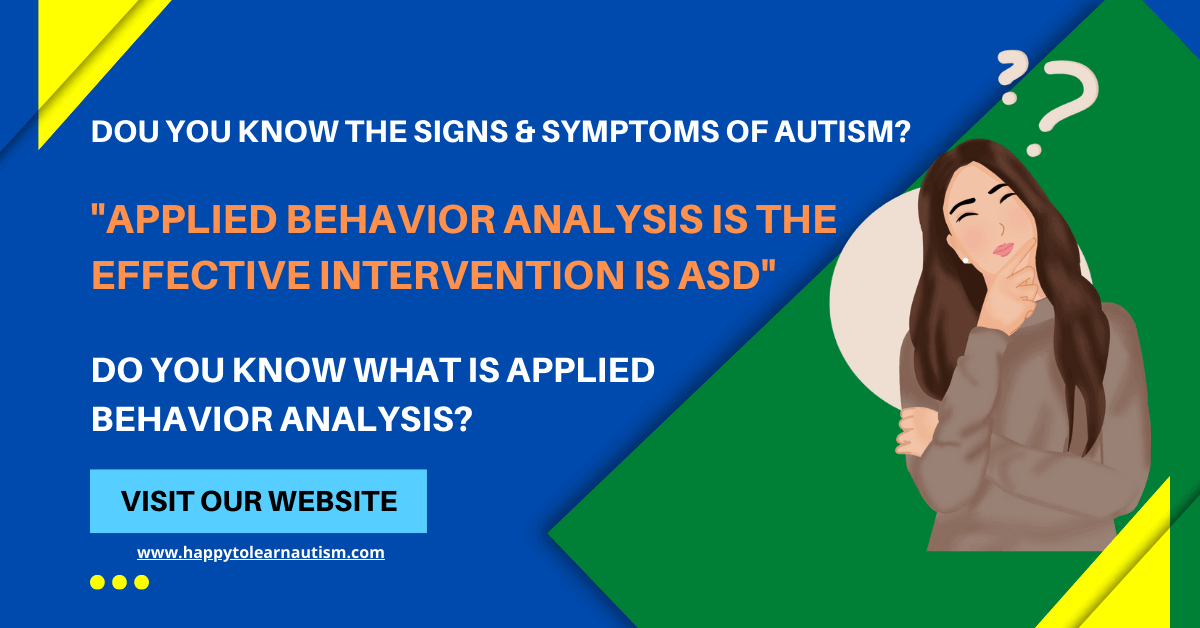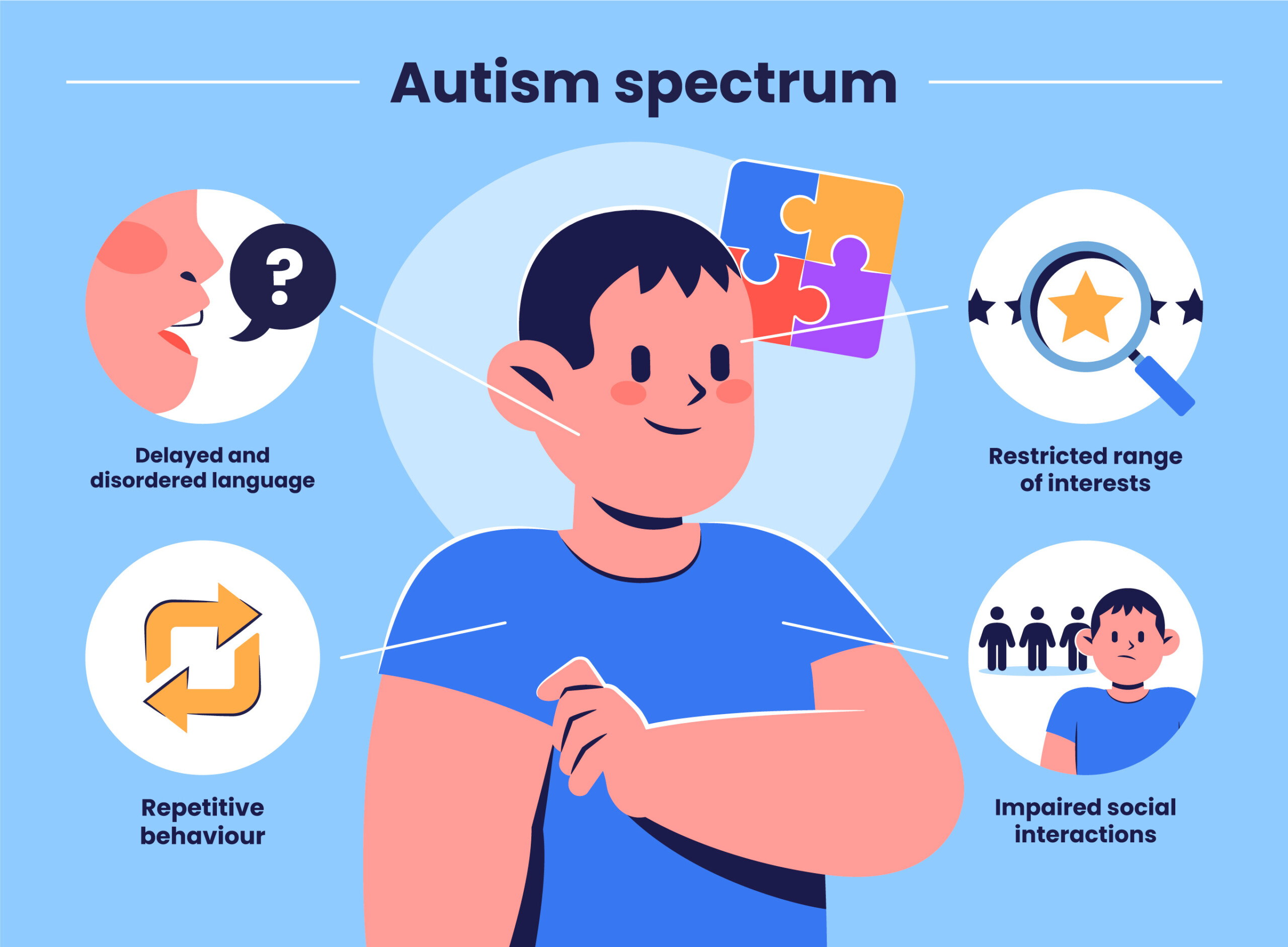Recognizing the Influence of Behavioral Autism on Life and Social Interactions
You may not understand how deeply behavioral autism influences day-to-day live and social communications. Individuals on the range often browse a globe filled up with communication difficulties and sensory overload. These obstacles can bring about stress and seclusion, affecting their relationships and total health. Recognizing these subtleties is essential for cultivating helpful settings. What strategies can we carry out to create even more comprehensive areas and significant links? The responses may shock you.
Defining Behavior Autism and Its Characteristics
Behavioral autism, frequently described as autism range condition (ASD), incorporates an array of conditions identified by obstacles in social interaction, communication, and recurring behaviors. You may observe that individuals with ASD often have a hard time to analyze social signs, which can cause misconceptions in discussions. They may locate it tough to develop eye call or take part in tiny talk, making social situations feel frustrating.
Communication problems can show up in various means, from postponed speech growth to a preference for utilizing fewer words. By recognizing these characteristics, you can foster an environment that promotes acceptance and urges effective interaction, assisting people with autism flourish in their daily interactions.
The Range of Autism: Recognizing Irregularity in Habits
Autism range condition (ASD) isn't a one-size-fits-all medical diagnosis; it varies commonly amongst people. You might observe that some people with ASD exhibit light signs, while others may face more significant obstacles. This variability can manifest in habits, interests, and sensory sensitivities. You may encounter individuals that are extremely spoken and involve quickly in discussions, while others might choose solitary tasks or interact non-verbally.
Furthermore, the method individuals with ASD react to sensory input can differ greatly; some could be overwhelmed by loud noises or intense lights, whereas others thrive in boosting settings. The range likewise includes distinctions in social communications; some individuals may battle to interpret social signs, while others navigate social setups with family member ease. Understanding this irregularity is vital, as it helps you value everyone's distinct experience and dressmaker assistance to their certain needs, promoting a much more comprehensive atmosphere for everyone.
Interaction Obstacles Dealt With by Individuals With Autism
When you communicate with people on the autism spectrum, you might observe their special communication obstacles. They frequently encounter troubles with both nonverbal and spoken signs, which can influence their social interactions. Recognizing these barriers is crucial for fostering much better connections and assistance.

Verbal Interaction Difficulties
Lots of people on the autism range experience verbal interaction troubles that can considerably impact their day-to-day communications. You could locate it testing to express your ideas, feelings, or requires plainly. This can bring about disappointment for both you and those around you, as misconceptions take place. You may battle with initiating discussions, preserving a topic, or recognizing nuances in speech. Frequently, you may choose using basic language or repeated phrases, which can limit your capacity to engage in deeper conversations. Your quantity, speed, or tone may not line up with social expectations, triggering others to misunderstand your objectives. Acknowledging these obstacles can help you and your support network create methods to boost communication and cultivate much better connections with others in your every day life.
Nonverbal Interaction Barriers
Verbal communication isn't the only difficulty people on the autism spectrum face; nonverbal communication obstacles can be just as substantial. You might locate it hard to translate body movement, faces, and eye contact, which are vital for reliable interaction. These challenges can bring about misconceptions or misconceptions of social hints, making communications feel frustrating or complex. You may have a hard time to express your very own emotions through nonverbal ways, leaving others not sure of your purposes or sensations. This detach can produce sensations of seclusion and stress. Identifying these barriers is critical for promoting understanding and empathy in your interactions. By addressing nonverbal communication, you can discover strategies to enhance your social experiences and boost your overall high quality of life.
Social Interaction Impacts
Social communications can often really feel overwhelming because of the special interaction challenges dealt with by individuals with autism. You might deal with interpreting social signs, making it difficult to comprehend mockery or body language. This can lead to misconceptions or awkward moments in conversations. Additionally, initiating and maintaining conversations may really feel tough, creating anxiety in social scenarios. You might like organized settings, making spontaneous interactions unpleasant. It's additionally common to experience problem in taking part in little talk, which can prevent forming brand-new friendships. Identifying these challenges can assist you find techniques to boost communication, such as exercising social skills in safe setups or making use of aesthetic help - Aba Therapist Near Me. Understanding your needs enables you to navigate social communications with higher self-confidence and convenience.
Social Communication and Connection Structure in Autism
While building relationships can be testing for people with autism, recognizing their unique perspectives and communication designs can promote meaningful links. You might observe that numerous individuals on the spectrum choose direct interaction and might battle with social cues or tiny talk. By being uncomplicated in your interactions, you can assist create an atmosphere where they feel comfortable.
Take the time to pay attention and observe just how they reveal themselves. This understanding can lead you in steering conversations better. Participating in shared interests can also function as a bridge to much deeper links. Whether it's a leisure activity, a favored program, or a mutual interest, these usual threads can open doors to friendship.
Daily Life Routine: Navigating Difficulties and Techniques
Steering everyday life regimens can be particularly challenging for individuals with autism, especially when unexpected adjustments take place. To browse these challenges, consider implementing aesthetic routines or checklists.
Establishing a routine that includes sensory breaks can additionally be advantageous. You can plan time-outs throughout your day to recharge. It's important to connect with those around you, allowing them know your choices and requirements. This aids develop an understanding setting.
Finally, practice mindfulness strategies to manage stress and anxiety and anxiety. Simple breathing workouts or basing techniques can make a significant difference. By incorporating these methods, you can enhance your everyday routine and decrease interruptions, making life feel extra workable.
Strengths and Capabilities of Individuals on the Autism Range
Recognizing every day life regimens is simply one facet of the autism experience. Lots of people on the autism range have amazing toughness and abilities that establish them apart. You might discover that your interest to detail is outstanding, allowing you to succeed in tasks that call for precision and focus. Your capability to think outside the box can result in ingenious solutions in different scenarios.
Moreover, your memory skills often shine, specifically in areas of passion. Autism Therapist. This knack for keeping info can make you a valuable resource in areas like art, innovation, or scientific research. You might likewise display strong visual thinking, enabling you to visualize complex concepts and fix issues This Site creatively
Additionally, your one-of-a-kind viewpoint on the globe can cultivate empathy and understanding in others, enhancing social communications. Embracing these toughness not only improves your confidence yet additionally helps others appreciate the varied skills you offer the table.
Creating Comprehensive Atmospheres for Individuals With Autism
Producing comprehensive environments for people with autism begins with developing sensory-friendly rooms that satisfy their unique requirements. You can likewise foster chances for social interaction, helping to construct links and friendships. By making these adjustments, you'll add to a much more welcoming atmosphere for everyone.
Creating Sensory-Friendly Spaces
While designing sensory-friendly rooms, it's vital to assess the distinct requirements of people with autism. Start by choosing calming colors and soft lights to develop a calming setting. When bewildered, include silent zones where people can charge and pull back. You'll intend to minimize loud noises and distractions, making use of soundproof materials or white noise machines to help keep serenity. Consider responsive components like soft materials or fidget-friendly objects that can give convenience. Ascertain that areas are flexible, permitting very easy rearrangement find more to accommodate various activities. Include aesthetic schedules or clear signage to aid people browse the area confidently. By attentively incorporating these aspects, you can create a welcoming atmosphere that sustains sensory demands and promotes overall well-being.
Promoting Social Communication Opportunities
Designing sensory-friendly spaces not just addresses specific comfort however likewise sets the phase for purposeful social interactions amongst people with autism. To advertise these interactions, create inclusive environments that invite engagement. Arrange structured activities, like art classes or group video games, that urge partnership without overwhelming sensory input. Use visual aids and clear interaction to assist every person engage easily. Urge peer mentoring, combining individuals with autism with helpful peers who can direct them with social circumstances. Furthermore, take into consideration holding regular neighborhood events that celebrate neurodiversity, cultivating acceptance and understanding among all individuals. By applying these methods, you can enhance social chances, helping individuals with autism build friendships and strengthen their social skills in a secure, inviting setting.

Often Asked Concerns
Exactly How Can Pals Support Someone With Behavioral Autism?
You can sustain a good friend with behavior autism by being person, paying attention actively, and respecting their limits. Engage in tasks they enjoy, interact openly, and create a comfy atmosphere where they really feel valued and recognized.
What Resources Are Readily Available for Moms And Dads of Children With Autism?
You can explore numerous sources for parents of youngsters with autism, including support system, instructional sites, and neighborhood community solutions. Linking with various other moms and dads can also provide beneficial understandings and shared experiences to assist navigate challenges.
Can Behavioral Autism Adjustment Over Time?

Yes, behavioral autism can alter over time. You could discover shifts in communication, social abilities, and habits as your child grows. Early treatment and support frequently play important roles in these developing changes.
Just How Do Sensory Sensitivities Impact Day-to-day Live?
Sensory level of sensitivities can make day-to-day experiences overwhelming. You may battle with brilliant lights or loud noises, bring about anxiety or avoidance. Locating settings that fit your demands can substantially enhance your comfort and overall life.
What Prevail Misconceptions Regarding Behavioral Autism?
You may assume behavior autism just impacts communication skills, however it's more complex. Several think individuals do not have empathy or intelligence, which isn't true. Recognizing these mistaken beliefs aids foster acceptance and assistance for those on the spectrum.
Behavioral autism, typically referred to as autism range disorder (ASD), includes a range of conditions defined by difficulties in social communication, communication, and recurring behaviors.Social communications can commonly feel frustrating due to the one-of-a-kind interaction challenges faced by individuals with autism.Designing sensory-friendly areas not just addresses private comfort but likewise sets the phase for significant social interactions amongst people with autism. Urge peer mentoring, matching individuals with autism with supportive peers that can assist them this post via social scenarios. By applying these approaches, you can boost social possibilities, helping people with autism develop relationships and reinforce their social abilities in a safe, inviting setting.